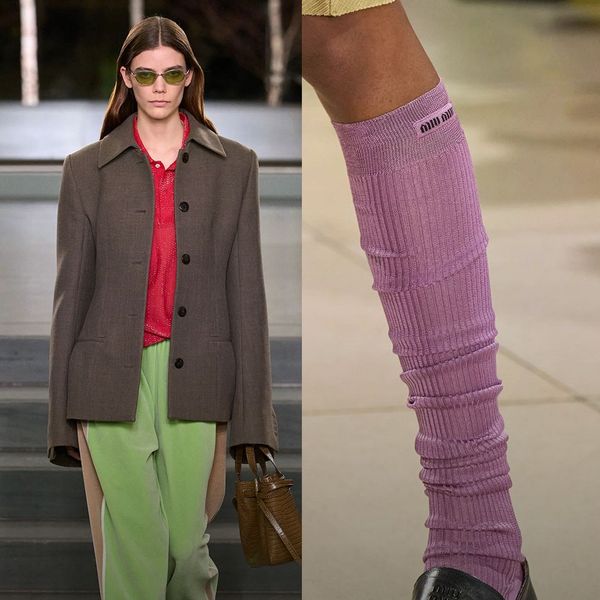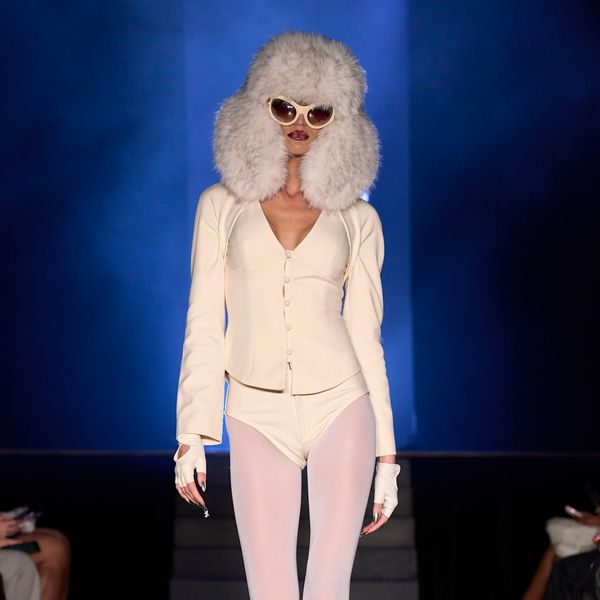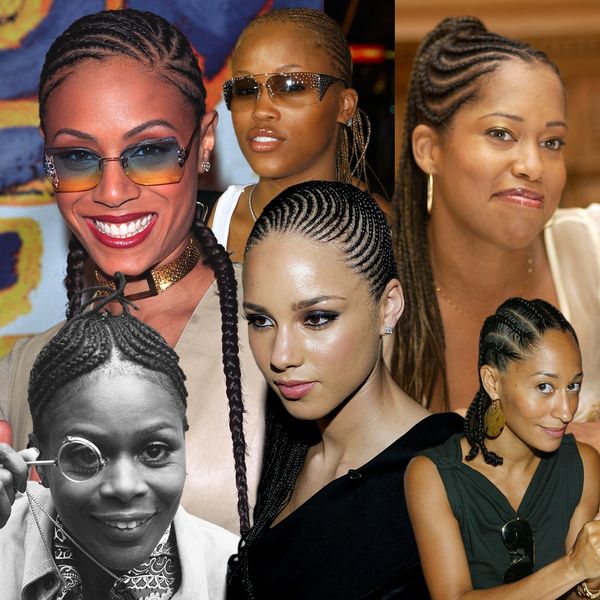Personal Portrait: Na Kim on Designing Books and Making Art
Want to pursue a creative path? Take a page out of Kim’s book.
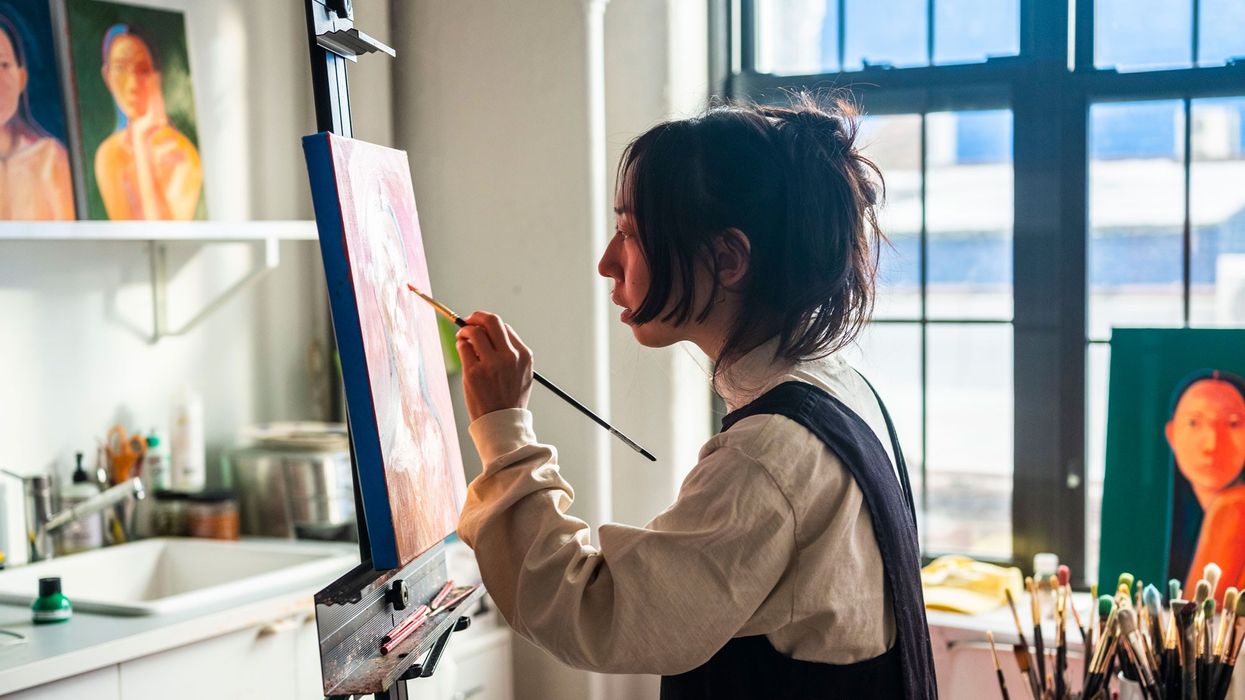
It's a busy afternoon when I call Na Kim at her Clinton Hill studio, where she works on book cover design for the publishing house Farrar, Straus and Giroux (FSG) as the associate creative director. She also paints here—a newer endeavor that culminated in her debut exhibition of portraits at the New York City gallery White Columns last fall.
"One really interesting thing about portraiture is the subtlest shift and expression or size of an eye—even just a single stroke can change how a face looks," Kim says. While her exhibition was comprised entirely of imagined subjects, it brought up compelling questions about self-portraiture. "What was interesting about people thinking [the paintings were] self-portraits was if you really look at me and this woman side by side, does it look like me? What makes it me or another [person]? What separates us? What makes us all individuals? I pay attention more to what makes a person a person." (Kim also tells me about working on a study of the author Raven Leilani earlier in the day. "I thought it would be nice to try painting a real person.")
When I ask Kim what viewers would find if she painted a "personal portrait" of her life at this moment, she chuckles and replies, "Some representation of chaos—a giant, chaotic, abstract hurricane… just a big old mess."
Chaos and mess have proven fertile ground for Kim's creativity to blossom in ways she couldn't have imagined. Born in Seoul, South Korea, Kim's life was embued with creativity from the start. "My parents made us take music lessons and art classes for as long as I can remember," she reflects. "We were always drawing, making music, and things like that. I think it's just a part of Korean culture. They want you to be well-rounded at a young age." (Kim even had a brief stint as a child actor.)
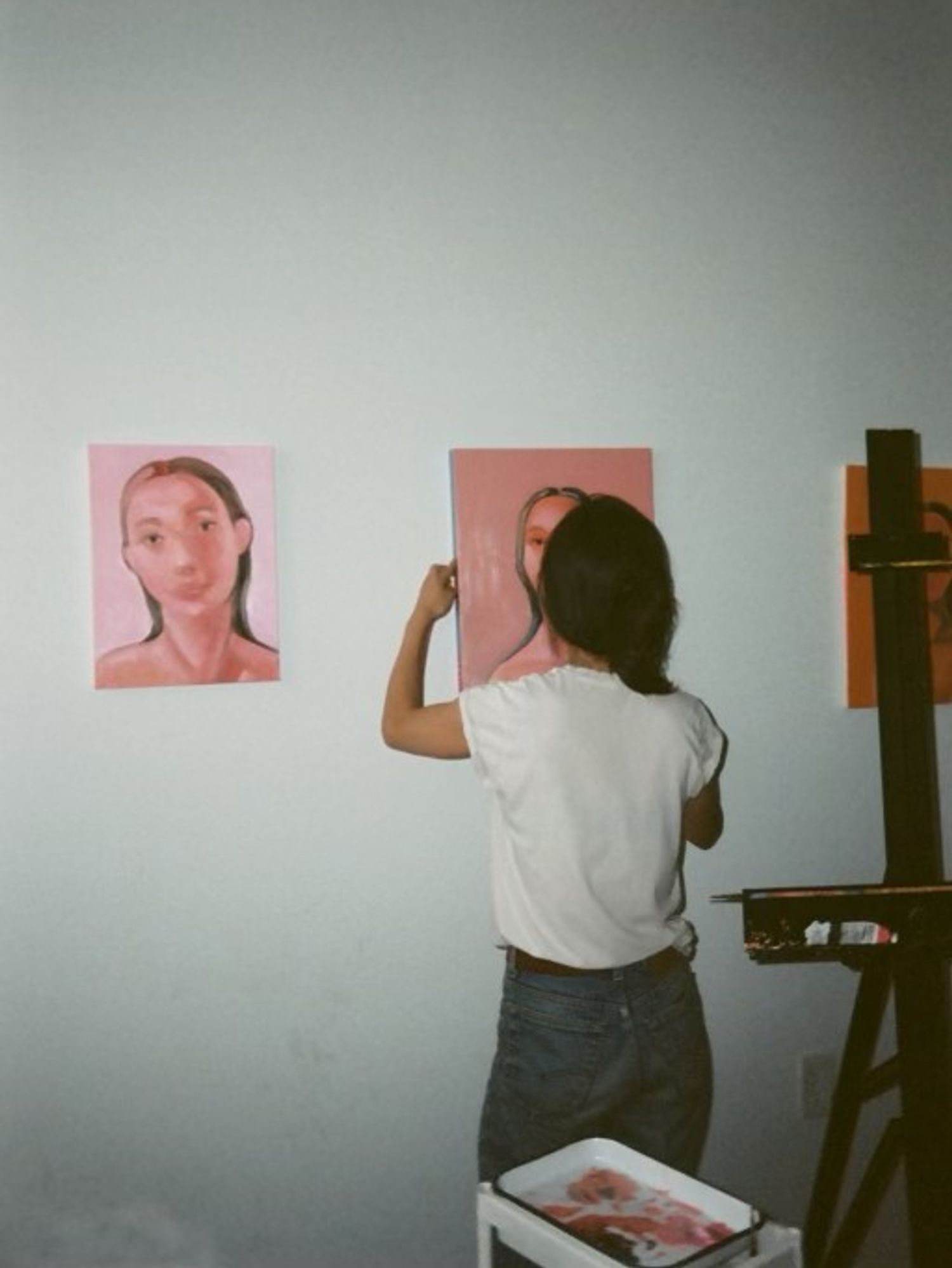
Sebit Min
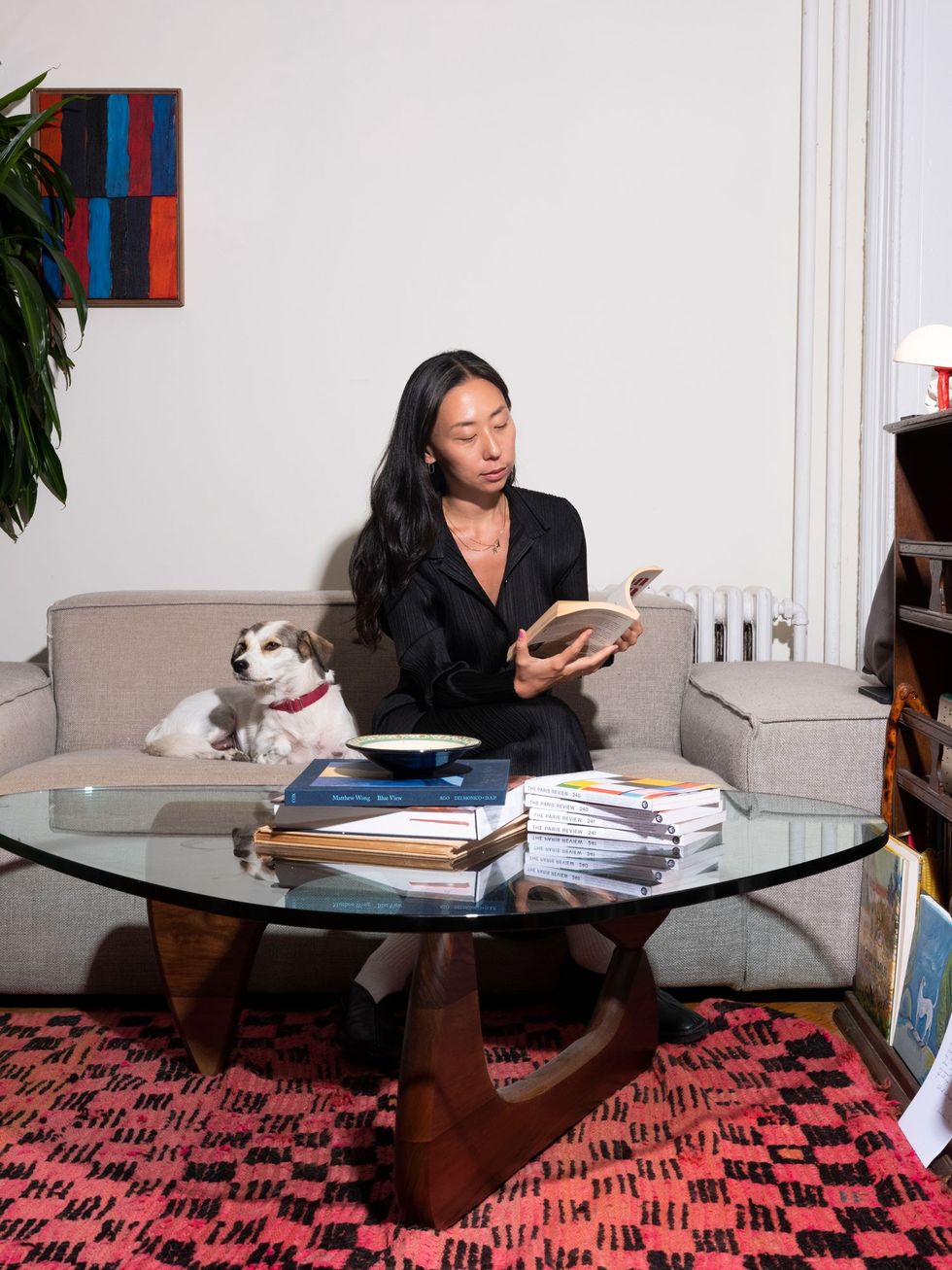
Zach Lewis
This open-mindedness proved helpful during Kim's global, albeit complicated, upbringing, which included living between South Korea and the United States from childhood through adolescence. "I moved to the States—always New Jersey, but different towns—for the first time, maybe when I was five or six," she says. Kim's father stayed in Korea, resulting in her moving back and forth year after year, sometimes for half a year at a time. "Then, my parents got divorced, so there was more moving back and forth, living with my mom and then living with my dad, and then coming back [to New Jersey] until high school."
No matter where she was in the world, Kim's creativity never waned. She describes her proximity to New York as part of why she wanted to move to the city when she grew up. Kim eventually made it there but first left for Baltimore to study at the renowned Maryland Institute College of Art (MICA). She obtained a degree in illustration with a minor in art history. Her time at MICA was artistically expansive, she says, though she never took a single graphic design class. "I originally went for painting, then switched to general sculptural studies and [finally] illustration. I tried switching to printmaking, then realized I wouldn't graduate on time." Kim credits illustration as a natural choice, given her confidence in drawing and perception of it as a more "practical" major. "My thought process was: I don't have the privilege to be a fine artist because of my circumstances. Let's be sensible about this."
During her senior year, Kim experienced professional momentum thanks to growing freelance illustration commissions from outlets like The New York Times, but she still felt adrift. "It was one of those weird situations where I felt like I needed a lot of guidance in the business side of things and how to build a career as a freelance illustrator," she says. The optics around Kim gave the faculty an incomplete picture. "Because I was one of the few people getting jobs at that time, they were like, 'Oh, well, we don't need to worry about you. You're going to be fine.'"
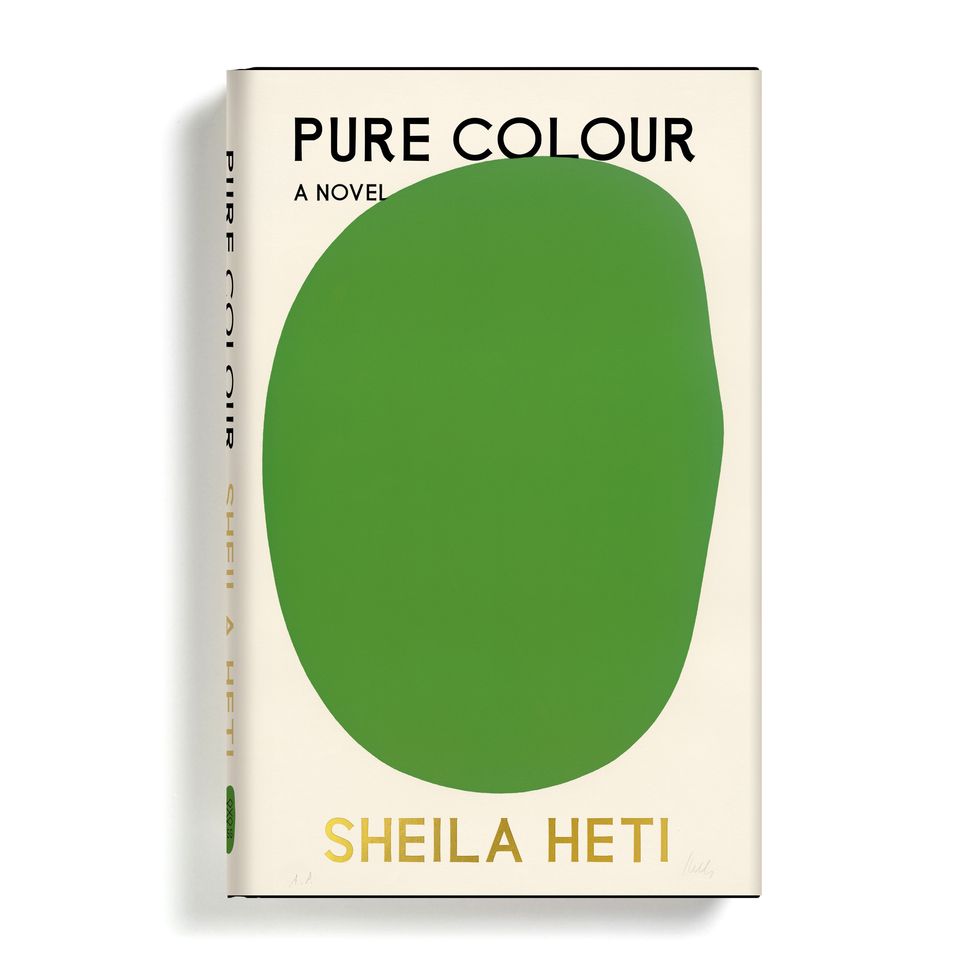
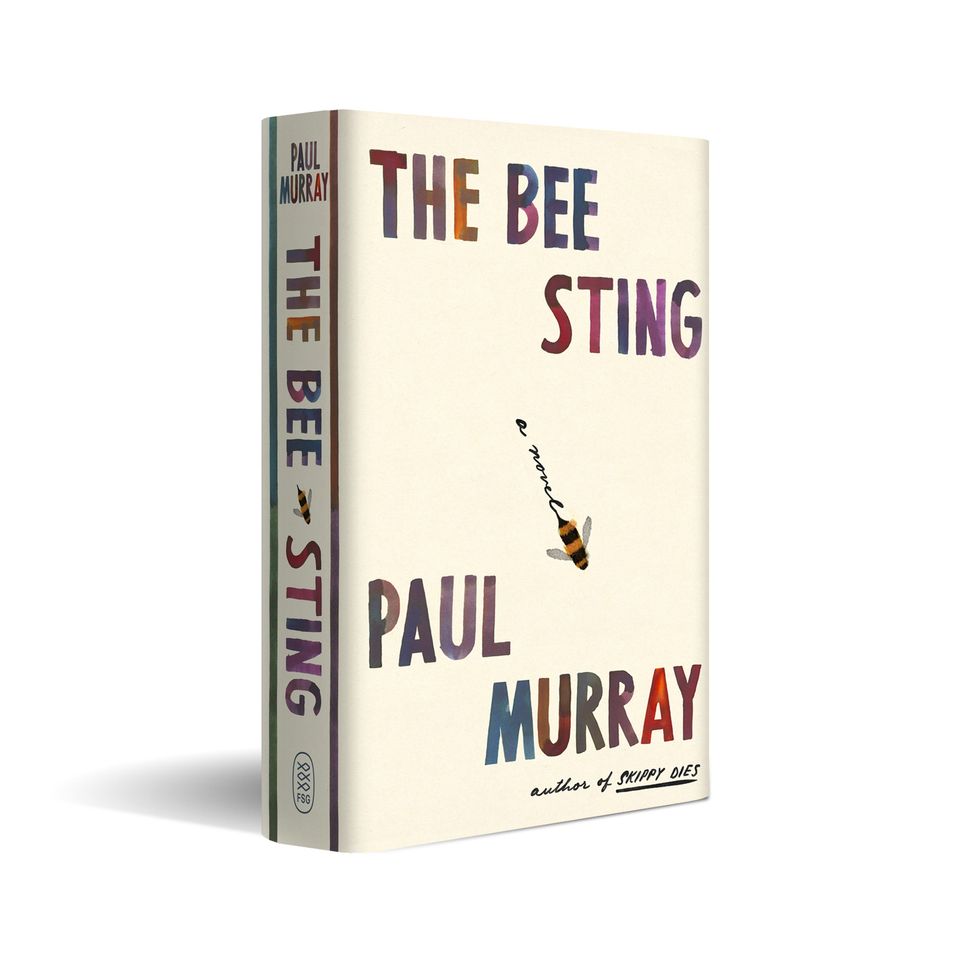
She continues, "But at the same time, I was so poor [then]. The restaurant I worked at closed. I had to borrow money from a friend to set up my senior thesis show. I had a pay-as-you-go phone, so I didn't have a smartphone or the internet a lot of time. I just wasn't equipped to have a career, weirdly, so I would miss job emails constantly and be unable to deliver. I kind of gave up on it. I bartended for about four years after graduating and thought, well, I'm just going to do this."
Eventually, Kim found her way back on the creative path after reconnecting with art director Charlotte Strick. She'd warmed to Kim's work during her senior thesis review, which later led to Kim working with Strick on her first book cover as an illustrator. "I was just feeling desperate, so I was like, well, I have to learn how to do something maybe in the design world, and I enjoyed working on that book cover." Strick later introduced Kim to Patti Ratchford at Bloomsbury, who gave Kim a notable break into publishing. "I think I was 26 or 27 at that time. I started as an intern two days a week, and I would take the bus up from Baltimore every week."
An avid reader herself, Kim contends that having a job "where you're getting paid to read seems pretty ideal." After holding design roles at publishers including Bloomsbury, Crown, and Simon & Schuster, Kim joined FSG in 2015, where she's risen in the ranks since. Her sensibility is wide-ranging: take Sheila Heti's Alphabetical Diaries, which cleverly uses form and color to draw attention to the alphabetical order of letters throughout the title, or Justin Torres's Blackouts, a simple yet striking design that draws the eye further in. "The biggest thing is trying to get a sense of the mood, the pacing, and things like that, rather than what's happening in the book. I let that guide me when I'm reading so that I know what kind of imagery I'm looking for if there's something specific that I want to depict."
Authors also have some involvement by filling out a "[book] jacket questionnaire" that details their design tastes and general preferences. "It helps a lot with the process, knowing what the author wants or doesn't want," Kim says. She rarely interacts with authors directly and says that boundaries (and trust) are necessary to create a desired result for all involved parties. "For a book cover designer specifically, we have to shapeshift quite a bit to see things through the author's perspective and vision. In that sense, I think it opens a lot of new ideas or things that I normally wouldn't look at on my own. I learn through that because I think and look through somebody else's eyes. Inevitably, you'll find things that surprise and excite you when you do that."
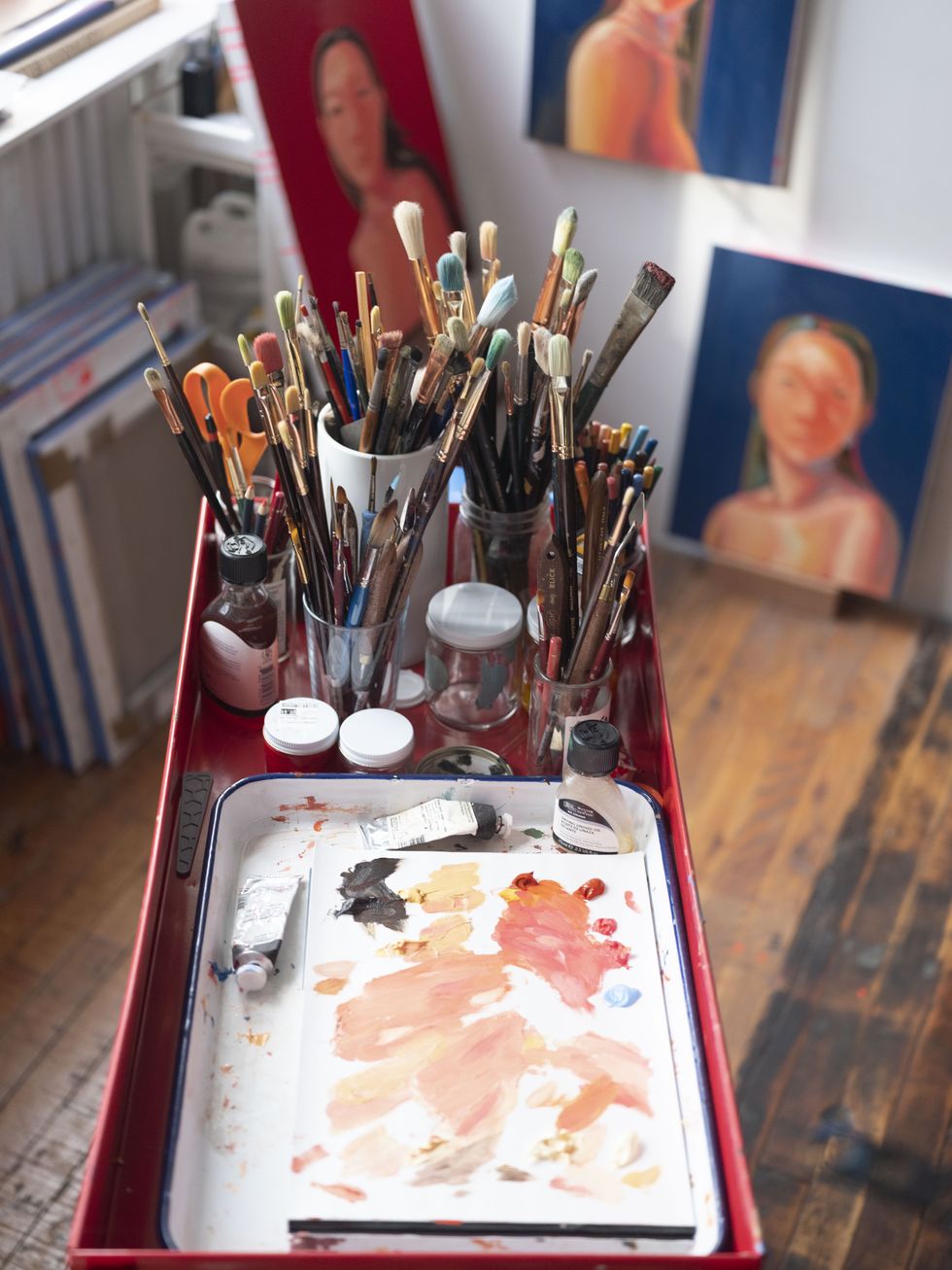
Zach Lewis
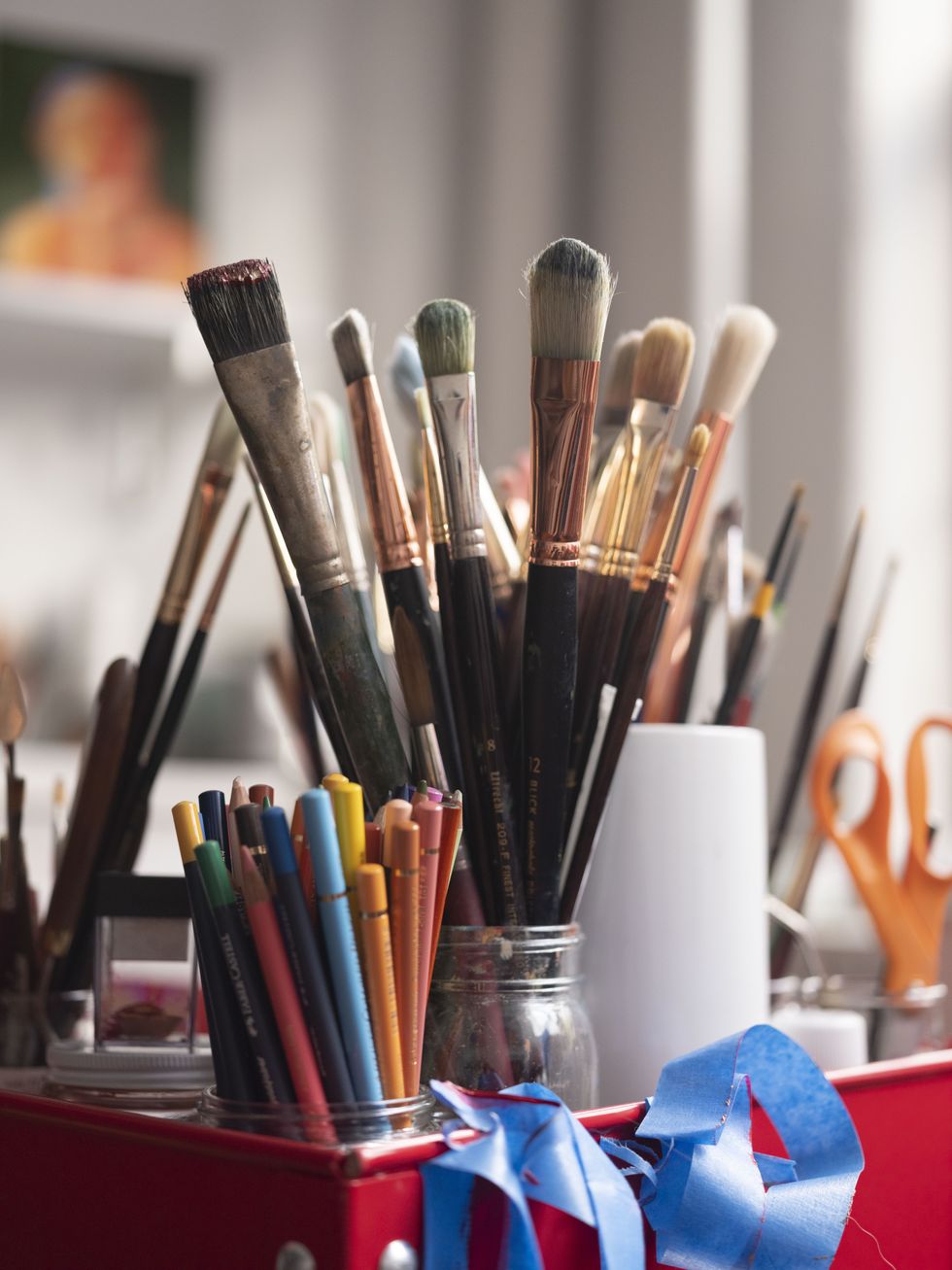
Zach Lewis
If that wasn't enough to keep Kim busy, she also joined the famed literary journal The Paris Review as art director in summer 2021. "I'm like a one-woman art department there," Kim says. Given her full-time job at FSG and the publication's quarterly schedule, Kim's creative responsibilities vary—from deciding on covers to designing merchandise, web ads, and party invitations to curating artist portfolio spreads. "The portfolios are really exciting because I get to meet a lot of artists and visit their studios, see how they work, [and] learn about their practice," she adds. "That's one of the most exciting parts of the job. It makes you really appreciate the process a lot more."
While Kim's days are never the same, one through-line is clear: she's learning a lot about herself—and her creative process. "I've learned that making art is incredibly hard, and making art for yourself is so hard [too]. It's so much harder than making art for other people. I've also learned that if you keep doing something, you'll get better at it, which is exciting." The latter refers to painting. Kim has only seriously pursued it for about a year, but she's finally allowed herself to invest in the medium. "It's all I think about now. If there's a day I don't do it, I feel bad. Even if I'm away and don't do it, I'm like, Ugh, that should have been a day where I was painting!"
Every artist's goals differ, and I wonder what Kim ultimately hopes to say with her work. "I'm not sure," she pauses. "I think just saying something at all is maybe the important part..." Our conversation serendipitously returns to books. "Did you read Alice Sadie Celine [by Sarah Blakley-Cartwright]? There's that part where she's describing Alice as somebody who knew that she deserved to be in the room … she knew she was allowed to be there … I feel like it's connected [to my story]: Why shouldn't I make art? The act of doing it is the part that excites me. I don't know what the message is because I guess the message will always change. Often, it doesn't show itself until the work is done."

The Art of Style (Rapid Fire)
How does art or design influence your personal style?
"I'm sure it influences me somehow, but it's not something I think of consciously—I don't ever think I want to look a certain way, especially when it comes to style. That's more inherent. I'm pretty basic at the core and just enjoy a flattering outfit or silhouette."
Do you have a daily uniform?
"In the studio, it can get pretty messy, so I wear the same clothes almost every day: jeans and a button-down or T-shirt. Outside of it, I still keep it pretty simple. I don't like to look at myself for too long, and as a result, I don't like to think too long about what I'm going to wear. I like what I like, and I buy multiples of the things that I like: I own four pairs of the same Lemaire flats, pants, and the same goes for my sneakers. As a result, I often end up dressing in monochromatic outfits—it's a way for me to look a bit more put together without losing my mind. I wear a lot of brown. If I could describe my look, it's Joe Pesci in Home Alone."
Is there a book character or artist whose fashion sensibility inspires you?
"Book character? No. I love Celia Paul's self-portraits wearing her artist's smock. David Hockney has some really great outfits. Picasso always seems to either have his shirt or pants off, which also appeals to me."
Do you have any creative rituals that keep you grounded or focused other than painting?
"No, no time."
Do you have any creative "resolutions" for the upcoming season?
"Just to keep doing what I'm doing and try to do it a little bit better than the day before. To enjoy it. And to sleep more."
This interview has been edited and condensed for clarity and length.

